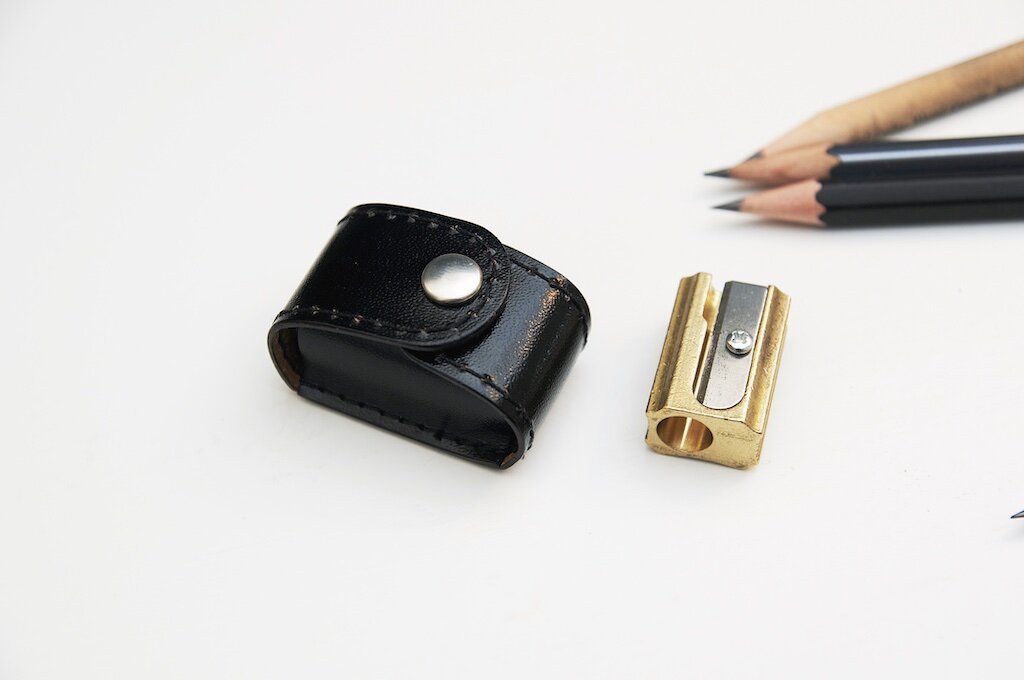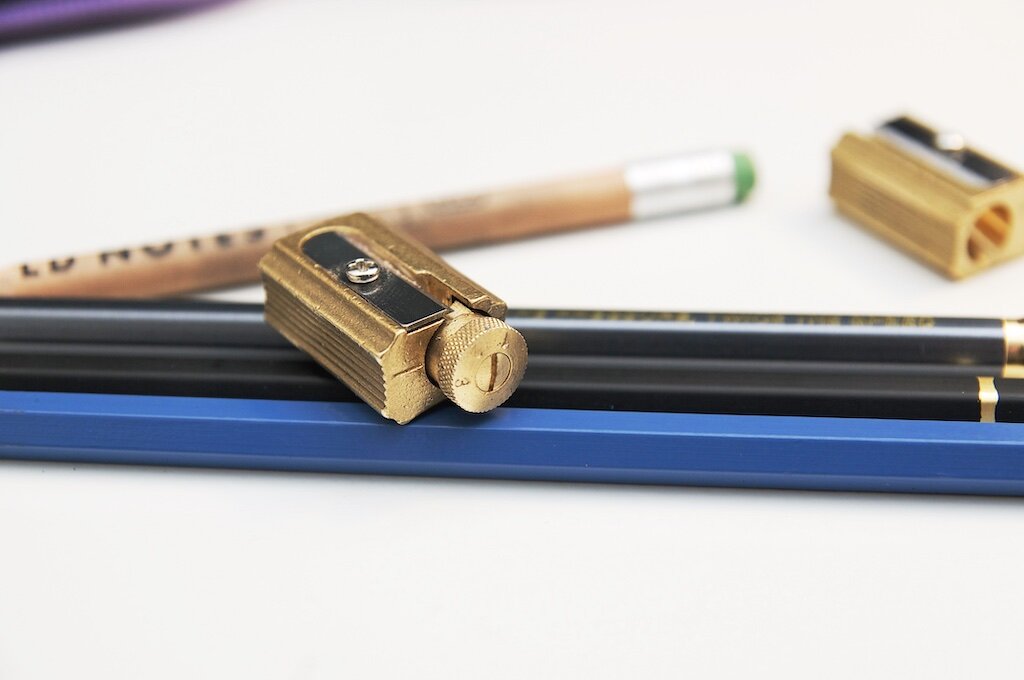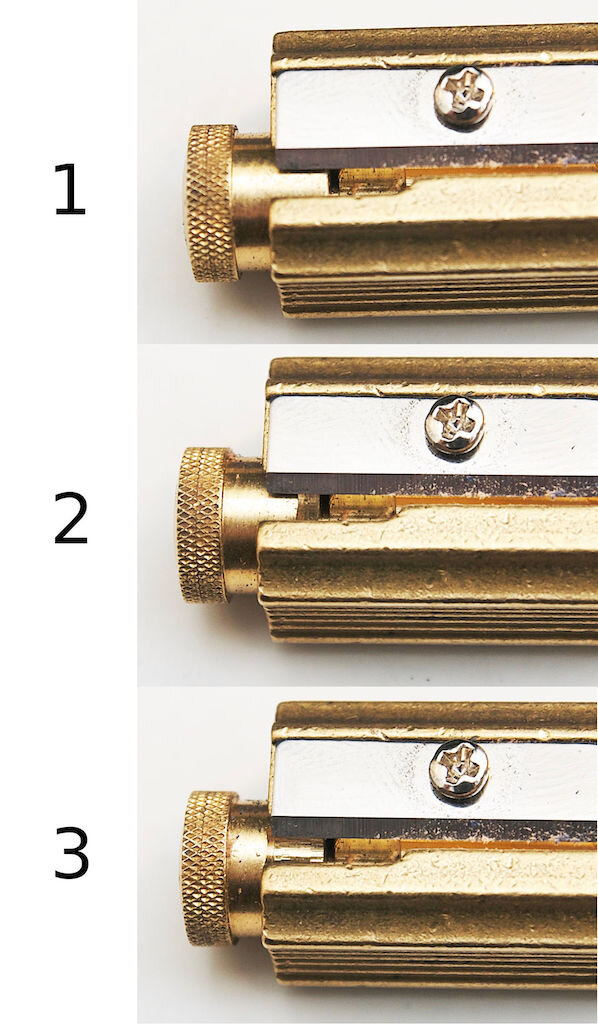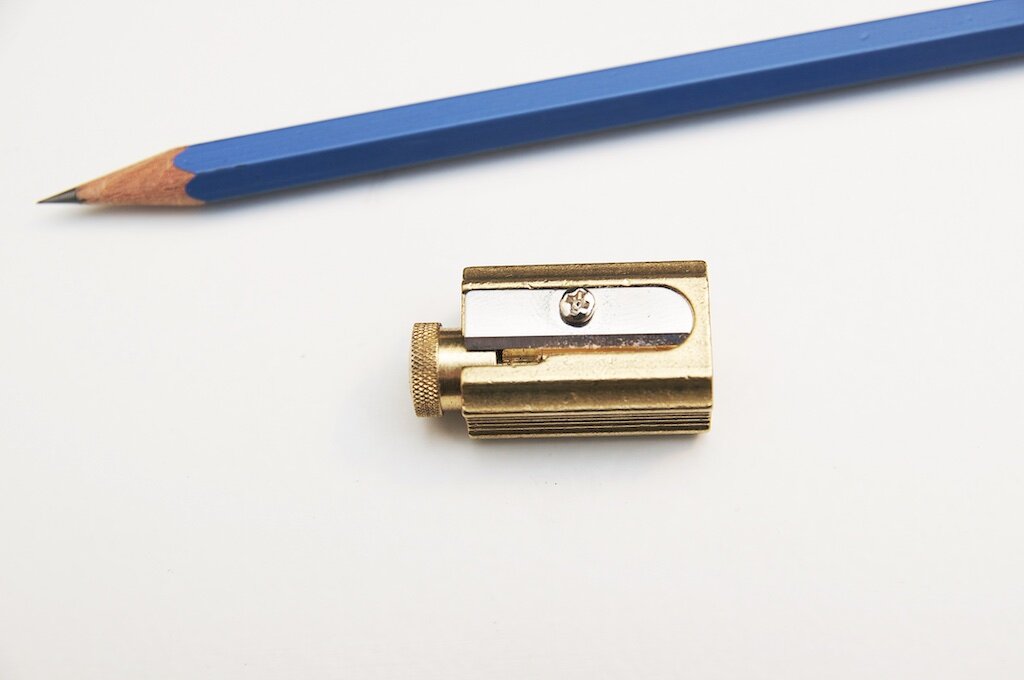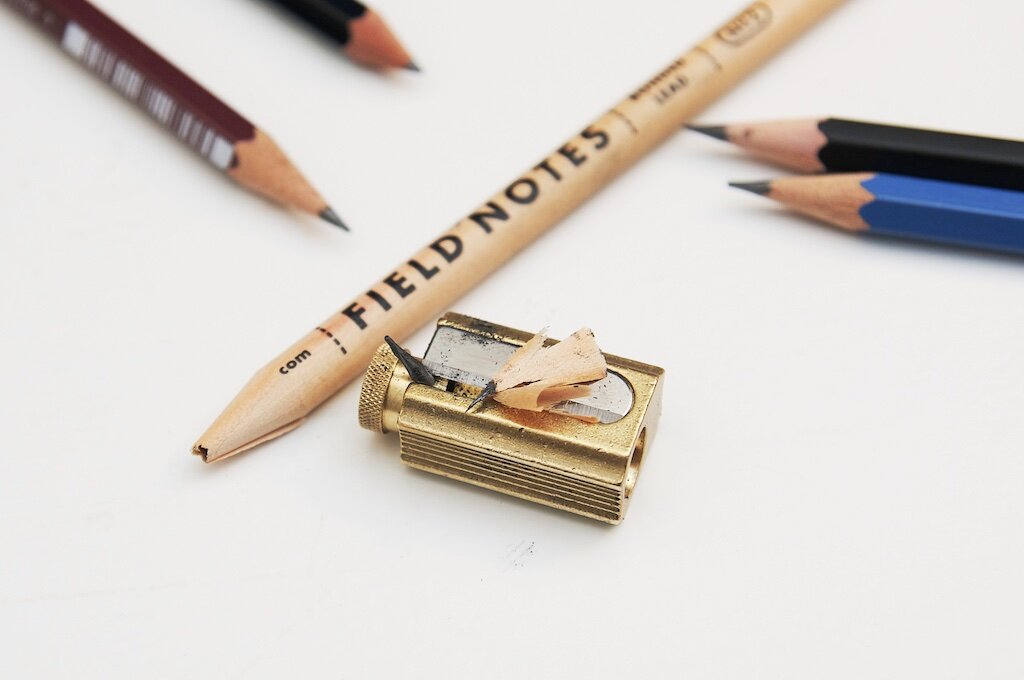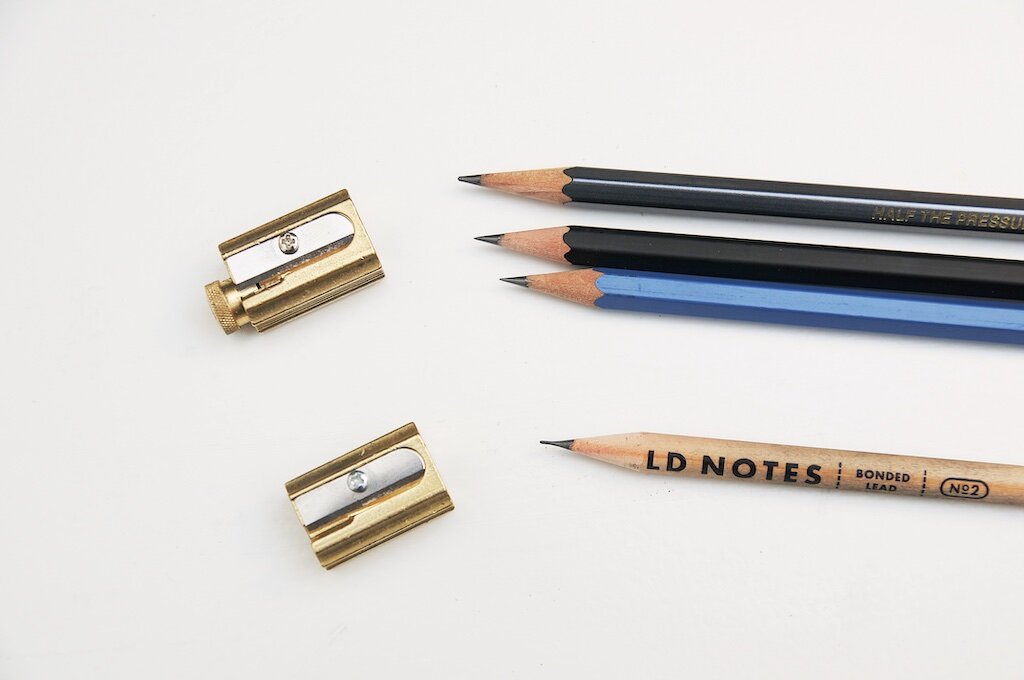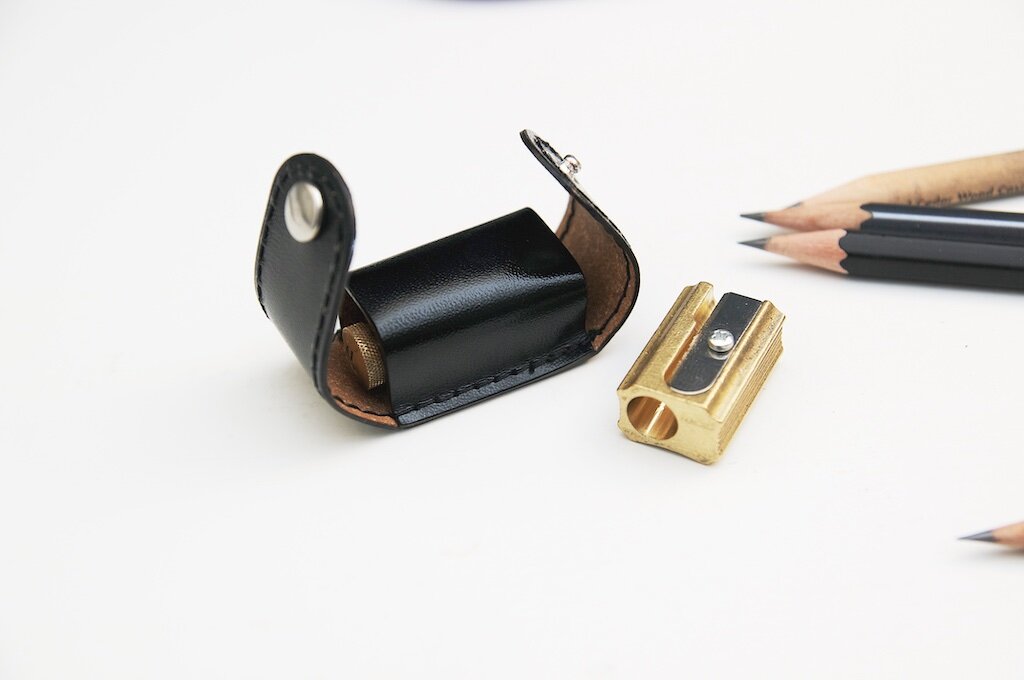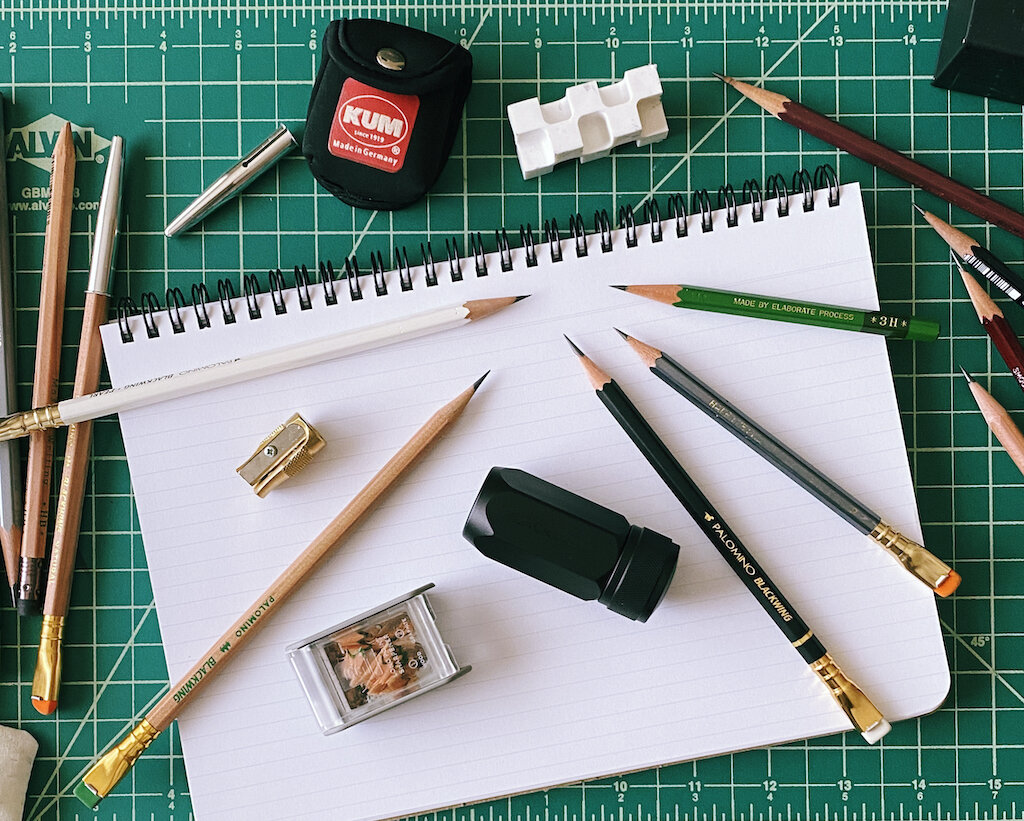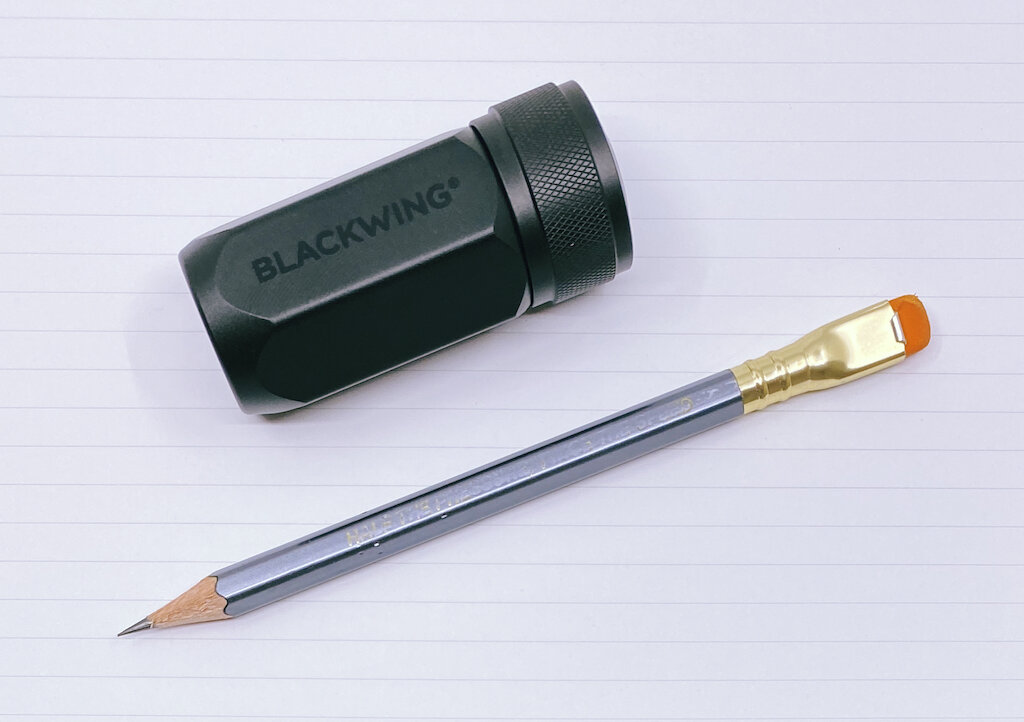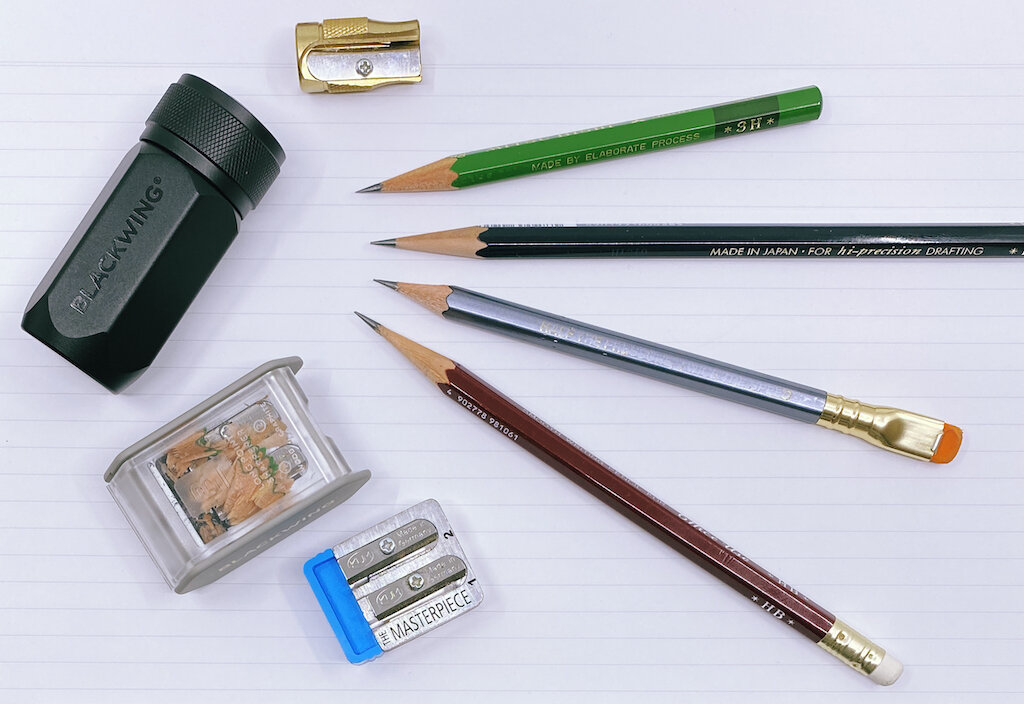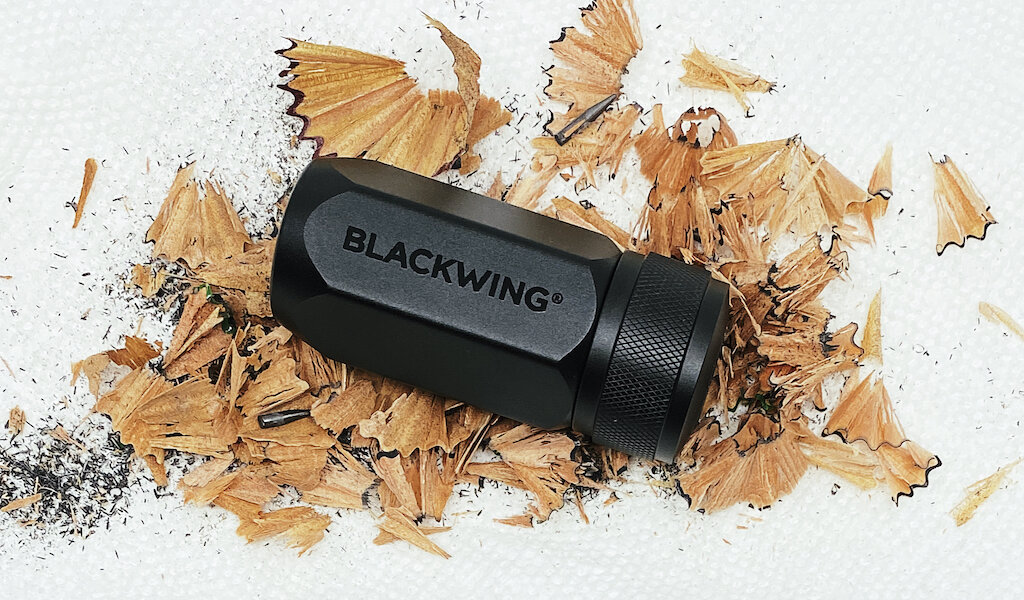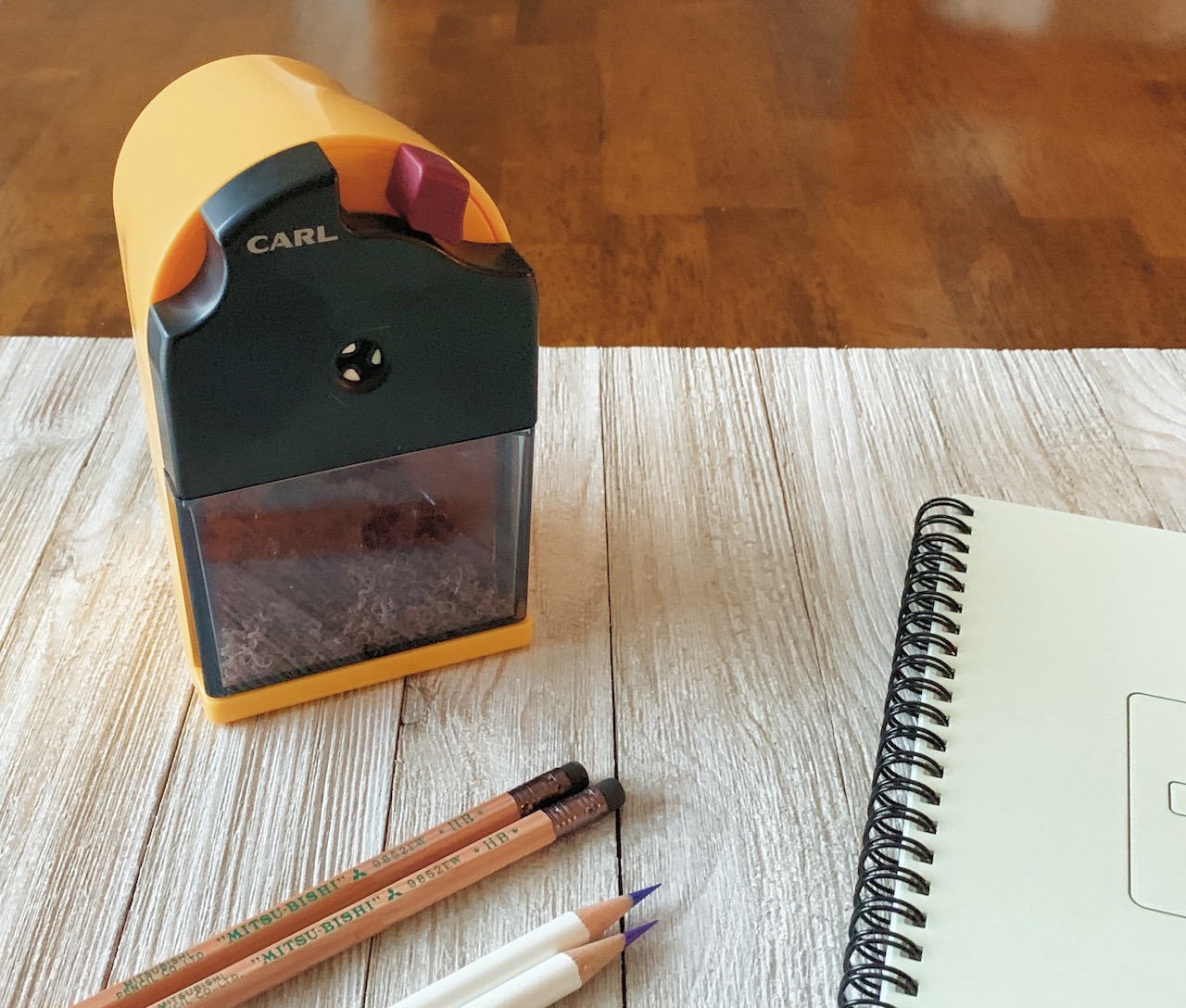(Jeff Abbott is a regular contributor at The Pen Addict. You can find more from Jeff online at Draft Evolution and Twitter.)
As far as pencil sharpeners go, I've never been too picky. My go-to sharpeners include the T'Gaal adjustable point and the Sonic Ratchetta. They're incredibly easy to use and also collect pencil shavings for easy cleanup. They also require zero skill, which I didn't know could be a thing in terms of picking a sharpener.
I recently picked up a couple of Dux sharpeners to try out because they 1) look really cool and 2) are incredibly small and easy to store in just about any bag or pouch, making it easy to always have a sharpener on hand. The two I decided to try out are the Dux Brass Single Hole Block sharpener and the Dux Brass Adjustable sharpener. They're both made of brass (except for the blades) and have handy grooves machined into the sides for additional grip. Over the past couple of weeks, I've been struggling with using these two sharpeners, and I'm still not sure if it's pure user error or just the fact that these sharpeners require a level of skill that I'm not prepared to work up to.
Let's start off with the single sharpener. This is the smaller of the two and comes in at just $7, it's the more affordable of the two. Sure, it's expensive compared to other simple sharpeners, but it is made solid brass. The sharpener is pretty easy to use, but it can be hard to hold depending on how hard the wood is in the pencil you're sharpening. Since it's so small, I've noticed that it slips easily and requires me to use a firmer grip than I'd like. I quickly learned that this pencil sharpener doesn't have an automatic stop, or brake, that prevents you from over-sharpening a pencil. If you're wondering what over-sharpening looks like, check out the Field Notes pencil in these images. After the graphite point hits a certain length, it just keeps growing longer like Pinocchio's nose. Not a useful trait for a pencil since it will snap at the slightest pressure. Aside from that little gotcha, this sharpener works just fine. It's not overly pleasant to use, but it gets the job done.
Moving on to the adjustable sharpener, I was incredibly underwhelmed. Out of the box, the adjustable dial wouldn't budge. I spent several minutes trying everything I could think of to unlock the secret formula and gesture to dislodge the dial, but nothing work. Eventually, I got out a screwdriver and disassembled the sharpener. On a hunch, I decided to reverse the direction that the small pin faces that keeps the dial gently notched in to the three settings. Sure enough, after re-assembling the sharpener and trying out the dial, it worked perfectly. Now, I'm completely aware that manufacturing is a difficult nut to crack, but this level of quality control seems unfortunately low. This sharpener comes in at $22, which is quite a premium when compared to other options — especially when the expensive feature is (in my case) broken out of the box.
After playing around with the different settings, I quickly learned that you have to experiment with different angles to hold the sharpener in relation to the pencil. In all honesty, I went through at least three pencils trying to improve my technique with this sharpener. I finally got it down, but it's important to note that I don't think it's reasonable that a purpose-built sharpener require practice. What really killed this sharpener for me was the fact that I couldn't successfully sharpen a pencil on the #3 setting, but more on that in a bit.
The adjustable nature of this sharpener allows you to control (to a small extent) how "sharp" or pointy the graphite tip becomes when you sharpen it. Setting #1 is the more blunt option, with the brake positioned closest to the tip. This produces a pretty nice point, but it's a little dull for my taste. Setting #2 is my favorite of the three, but it takes care and attention to achieve. Due to the wide gap of the opening hole, you have to sharpen the wooden part of the pencil and then change the angle so that the graphite comes in contact with the blade. It's tricky, but not too difficult.
Setting #3 caused me a lot of grief and is responsible for my wasted pencils. No matter what I did, I could not finish sharpening a pencil to a point without breaking the point halfway up the cone of the pencil (see picture for a good reference). After two and a half pencils, I finally gave up and decided to avoid that setting for good. It was really frustrating, and I'm not sure I'll ever forgive it.
One final nail in the coffin for both of these sharpeners is the lack of a shaving collection bin. This is completely due to the tiny and portable nature of these sharpeners, and I totally understand that. Just know that these kinds of sharpeners will make a mess — mostly from the graphite sharpening instead of the wood shavings!
Ultimately, I'm glad I tried these sharpeners out. I know there are other small, portable options for sharpeners that are cheaper and better. I also know that in a pinch, I'm much better at sharpening a pencil with a sharp knife over these two sharpeners.
I really can't recommend these based on my experience alone, but I'd love to know if I'm just "holding it wrong" or something similar. In case you're interested, you can pick up a single hole sharpener or the adjustable cousin over at JetPens, or you can look at much better options as well.
(JetPens provided this product at no charge to The Pen Addict for review purposes.)
Enjoy reading The Pen Addict? Then consider becoming a member to receive additional weekly content, giveaways, and discounts in The Pen Addict shop. Plus, you support me and the site directly, for which I am very grateful.
Membership starts at just $5/month, with a discounted annual option available. To find out more about membership click here and join us!


